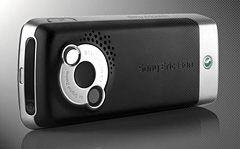
One of the reasons that people shy away from camera phones is that they often get lousy pictures. You can improve your odds by trying some of these tips. Here's a look at the most common camera phone settings and how they can help you capture better images.
Start with Picture size. This option gives you the choice between a couple resolution settings: large and small. (They would be more accurately labeled small and smaller, but that's so un-American) Choose large, which is usually about 640 x 480 or 1.3 megapixels. You can't make a very big print with these images, but they can look decent on a web page or part of an email attachment.
Here are a few other options you might want to try.
Technorati Tags: digital photography, photography, tips
- Night mode. Since many camera phones don't have flashes, manufacturers had to figure out a way to let you take pictures indoors. What they came up with is night mode. Ironically, this setting doesn't work very well in darkness. But in typical indoor light, night mode is pretty good. Turn it on for all indoor photography or whenever the light is less than full sunshine.
- Effects. You may get a menu of unusual settings called effects. Here you can change from normal color photography to things like sepia, black and white, or even negative, which is perfect for that X-ray look you've been yearning for. One trick you might find useful is to use the negative mode for shooting pictures of text on white boards. Sometimes it's easier to read when it's white writing on a black background.
- Default name. This setting, if you have it, is actually pretty handy. Instead of catchy file names like IMG_5402.jpg, you can instruct your camera to use something more friendly, such as Mexico Vac 001. Just remember to change the setting once you return home, or your friends might wonder why that shot of the Empire State Building is called Mexico Vac 443.
- Self-timer. Often considered the best way to include the photographer in family group shots, the self-timer is also a great tool for getting sharp pictures in less-than-perfect lighting. Rest the camera on any steady surface, compose the image, activate the self-timer, and press the shutter button. The camera counts for about 10 seconds and then shoots the shot. (As usual, the steadier the camera, the sharper the shot will be.)
Often, you'll want to use these settings in combination, like using night mode and a self-timer to take better indoor photos.











